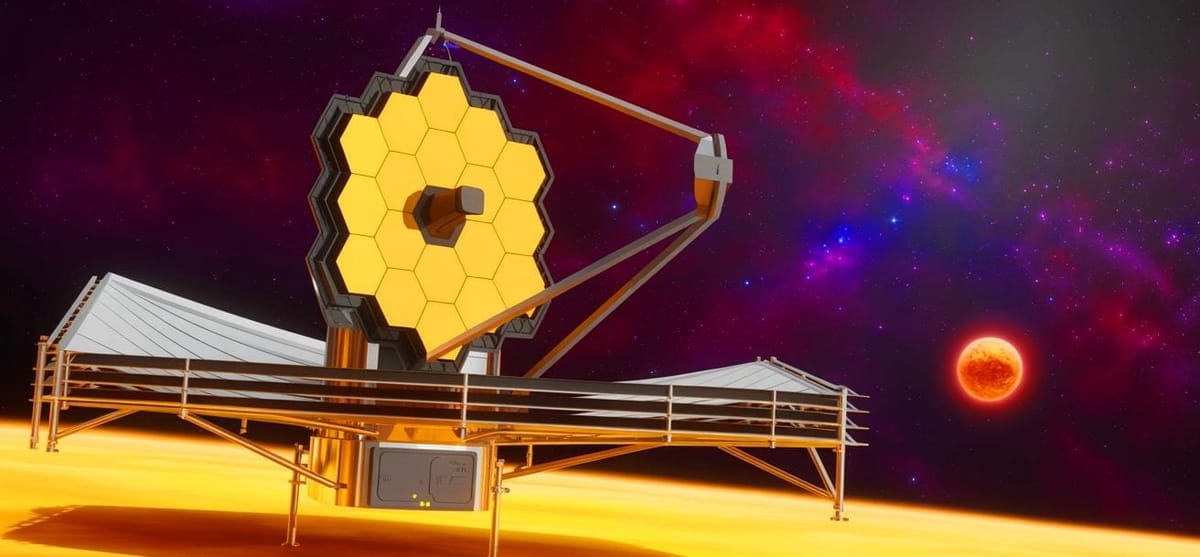James Webb Telescope Captures First Direct Image of Alien-Like Exoplanet Orbiting 60 Light-Years from Earth

In a groundbreaking development that could redefine humanity’s quest for understanding extraterrestrial worlds, NASA’s James Webb Space Telescope (JWST) has captured the first direct image of a previously undetected exoplanet, orbiting a star approximately 60 light-years away in the constellation Hercules.
Designated 14 Herculis c (14 Her c), this enigmatic celestial body exhibits characteristics unlike any exoplanet ever directly observed. The planet, with a mass estimated to be seven times that of Jupiter, orbits its host star in a highly misaligned and eccentric path—a feature that suggests a tumultuous gravitational past, potentially involving interactions with other massive bodies or a history of planetary migration.
“This is a watershed moment in exoplanet science,” said Dr. Katie Fetherston, lead researcher at NASA’s Goddard Space Flight Center. “The ability to directly image such a cold and distant planet opens new doors for planetary characterization and climate modeling far beyond our solar system.”
A Cold and Alien World
What makes 14 Her c particularly extraordinary is its temperature. Clocking in at an estimated –3°C (26°F), it is among the coldest exoplanets ever imaged directly. This frigid temperature provides a rare glimpse into the diversity of planetary atmospheres in deep space and poses intriguing questions about heat retention, chemical composition, and formation scenarios.
Using the Near Infrared Camera (NIRCam) onboard JWST, scientists employed a high-precision coronagraph to block out the blinding light of the host star and isolate the faint infrared signature of the planet. The resulting image, though subtle, is one of the most technologically ambitious feats in the history of observational astronomy.
Implications for Planetary Formation and Evolution
Perhaps most compelling is 14 Her c’s unusual orbit. Astronomers observed that its trajectory is chaotic and highly inclined—a strong indicator of gravitational disturbances in its system’s early formation history. Theories suggest it may have been ejected and recaptured, or influenced by another massive body, possibly a brown dwarf or unseen sibling planet.
“We’re witnessing the gravitational scars of this planet’s ancient battles,” remarked Dr. Luciana Mihai, an astrophysicist at the European Southern Observatory. “14 Her c challenges our assumptions about orbital stability and system architecture.”
Chemical analyses of the planet's atmosphere, though in early stages, have revealed potential traces of carbon monoxide (CO) and carbon dioxide (CO₂)—molecules critical to understanding both the planet’s origin and its potential for hosting prebiotic chemistry.
Technological Triumph for JWST
This historic detection underscores the James Webb Space Telescope’s transformative role in exoplanet science. While previous discoveries largely relied on indirect methods such as transit photometry and radial velocity, this is one of the first successful direct imaging efforts of a cold exoplanet—a monumental leap for the field.
Until now, direct imaging was reserved for hot, young gas giants glowing in infrared. 14 Her c, in contrast, reflects JWST’s capacity to detect older, cooler, and more elusive planetary bodies—a key requirement in the long-term goal of finding Earth-like planets and signs of life beyond the Solar System.
A New Era in Cosmic Cartography
As research continues, astronomers aim to monitor 14 Her c’s orbital evolution and obtain higher-resolution spectral data. These findings may offer unparalleled insights into planetary atmospheres, system dynamics, and astrobiological potential in far-flung corners of the galaxy.
“Every planet we discover adds a brushstroke to the canvas of our understanding,” said Dr. Fetherston. “With JWST, that picture is becoming clearer, stranger, and more beautiful than we ever imagined.”
Related Resources:




